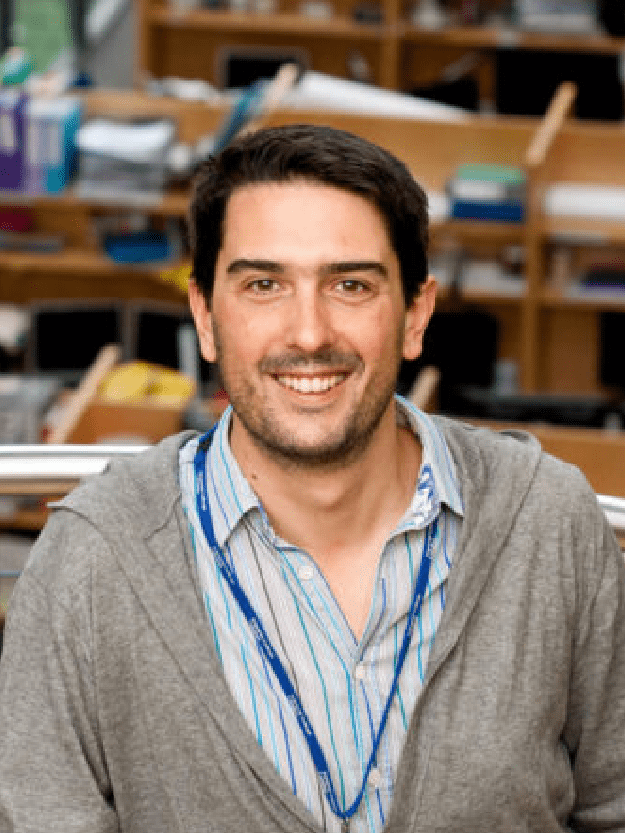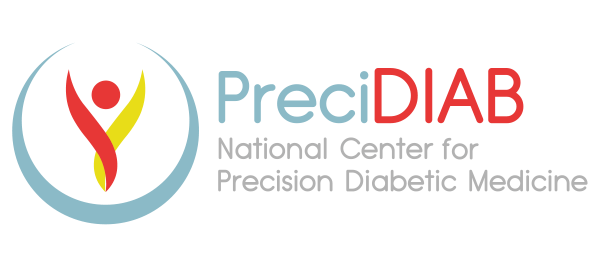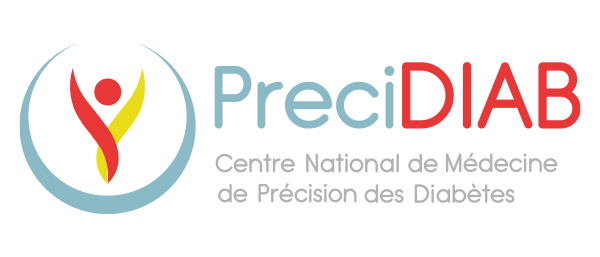Today, Dr Marc-Emmanuel DUMAS tells us about his arrival within the framework of the “Talent reception” system as well as the installation of its technical platform and the Research projects that will be associated with it, in particular for the projects of the Center National PreciDIAB: “Spotlight on the biochemical dialogue between intestinal bacteria and their host in metabolic diseases”.

Dr. Marc-Emmanuel DUMAS
Researcher at CNRS, leader of WP4.1 in PreciDIAB
Can you tell us about your professional background and what brought you to work in our Center?
After studying agricultural engineering and a doctorate in biochemistry, I went to the UK for a 5-year post-doc at Imperial College London funded by the Wellcome Trust. I then accepted a position as CNRS researcher at the École Normale Supérieure de Lyon in 2007 and I stayed there for 2 years before returning to Imperial College where I rose through the ranks until obtaining the Chair. of Systems Medicine in 2019.
I have been working for more than 20 years on the study of the metabolome, that is to say, all the metabolites such as small molecules resulting from metabolism, vitamins, hormones or other energy molecules (glucose, lipids, etc.). Through the use of advanced equipment such as nuclear magnetic resonance spectroscopy and mass spectrometry coupled with multidimensional statistics, I have been able to demonstrate over the past 15 years that many microbial molecules are part of the associated metabolic signature. to many diseases and that some of these metabolites have quite surprising pharmacological activities.
I also looked at the genetics of metabolic profiles in animal models and then in humans and to my surprise microbial metabolites are precisely the most heritable, which suggests that the cohabitation between intestinal bacteria and their host (our body ) was the subject of very strong selection pressure.
I joined EGID’s UMR 1283/8199 in September 2020 as part of the “Talent Reception” program with the generous support of the MEL I-site and the Hauts-de-France Region, in order to to set up a new group working on the microbial metabolome in cardiometabolic diseases. This “Talent Reception” scheme and the launch of a flagship project such as PreciDIAB were major scientific arguments in my decision to set up a group at EGID.
What are the innovative techniques that you are going to put in place with your team and the projects that will be backed by them?
It is a matter of setting up a theme from a blank sheet of paper, which leaves a lot of freedom but represents an obstacle course with the preparation of a laboratory, the purchase of latest generation mass spectrometers, the in place of a library of pure chemical standards for more than a thousand metabolites and lipids, and of course, the recruitment of highly qualified personnel, sometimes from abroad, to operate the metabolome platform, which represents the heart of group activity.
The second part represents the installation of a metagenomics theme by shotgun sequencing, in particular by creating a synergy with the NGS LIGAN-PM platform. In terms of technology, the presence of a labeled platform represents a major asset, all that remains is to develop the last link with the implementation of a bioinformatic pipeline for processing metagenomic sequences, which will allow us to integrate the metabolome, the metagenome and the host genome in order to map and exploit the wealth, still largely unknown, of our intestinal pharmacopoeia, this reservoir of bioactive natural substances synthesized by the microbiome and which govern our immune system, our metabolism and even our behavior!
In the short term, the technical platform will be backed up by certain ongoing projects that I have brought back in my boxes and which are joining PreciDIAB to validate the methodologies on the new instruments. In the medium term, at the heart of the PreciDIAB program, I am developing an approach to study the interactions between metabolic diseases, the environment and nutrition. Indeed, the microbiome plays a sounding board role that must be dissected from a fundamental and mechanistic point of view. Ultimately, the objective of this project is the translation of these concepts to the clinic with the metabolomic characterization of the PreciDIAB cohorts which are in the process of being recruited.
What are the ambitions in terms of expected results? How will these perspectives change the understanding or the way we manage metabolic diseases and diabetes in particular?
In the short term, we are focusing exclusively on launching the metabolome platform by the end of the year, while finalizing key publications. By combining our know-how on the metabolome and the microbiome, with that of EGID in human genetics and on preclinical models, I aim to create a differentiated theme, based on our ability to integrate the metabolome, the metagenome and the genome. of the host to better understand metabolic diseases.
These innovations will allow us to better understand the genetic and metagenomic determinants of human metabolism. This opens up therapeutic avenues for us, whether through broad-spectrum interventions acting on the microbiome such as intestinal microbiome transplants, supplementation with nutrients promoting the development of beneficial bacteria (prebiotics), and then treatments. more targeted based on new generation beneficial bacteria (probiotics), or on beneficial microbial compounds (postbiotics), but also through pharmacological targeting of certain microbial genes responsible for the production of deleterious metabolites. This is a whole repertoire of new therapeutic solutions.
As a first step, we will establish the technical platform and above all publish, to recognize EGID’s know-how, to obtain recognition from the supervisors, local, national and European actors. As research is not done in isolation, we keep very strong links with our international collaborators, whether in the United Kingdom, Europe or Canada. Thanks to the support of the University of Lille, we are precisely in the phase of launching an International Associated Laboratory with Imperial College in order to facilitate the exchange of know-how, the training of personnel from an analytical or chemo point of view. -informatics, and above all the establishment of a harmonized network of metabolomics centers for the study of human cohorts, the famous “Phenome Centers”.
Beyond metabolism, the microbiome and its compounds play a fundamental role in orchestrating human immunity, physiology and behavior. The Anglo-Saxon proverb says it well “the sky is the limit”, (note the limit, it is the sky)… And why not dream of going to reach the moon and to take our microscopic friends on other planets in the relatively near future?
Discover the interviews...
Neurologist at Lille University Hospital and researcher at Inserm.
Nutritionist, specialist in endocrinology and metabolic diseases, and head of the Nutrition & Physical Activity Department at the Institut Pasteur de Lille (IPL).
Professor of biochemistry and researcher at UMR 1011 Nuclear Receptors, Cardiovascular Diseases and Diabetes.
Physiology & Cardiovascular Functional Explorations CHU Lille, Inserm U1011
Research Engineer in Bioinformatics, responsible for the bioinformatics platform of UMR 1283/8199
Research director at Inserm, scientific manager of the center’s diabetes genomic medicine programs, head of EquipEx LIGAN-PM and team leader at UMR 1283/8199
Professor of medical pharmacology Director of the Clinical Investigation Center (CIC 1403 Inserm-CHU de Lille) and of the Clinical Trial Unit dedicated to diabetes.
Department of Endocrinology Diabetology, Nutrition Metabolisms of the University Hospital of Lille.
PhD, e-One Health professor and director of the Multi-Omics Statistics Department at the University of Surrey, associate researcher at the University of Lille, and in charge of the “studies of links between diabetes and cancer risks” project within the Center National PreciDIAB
Previous
Next



